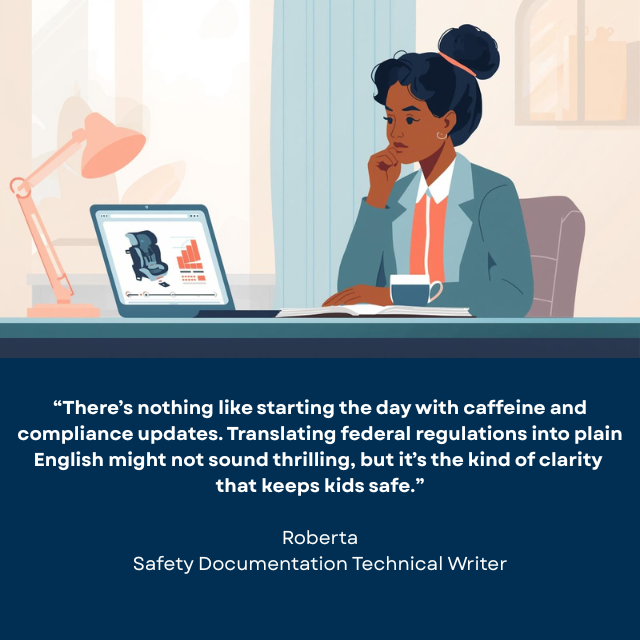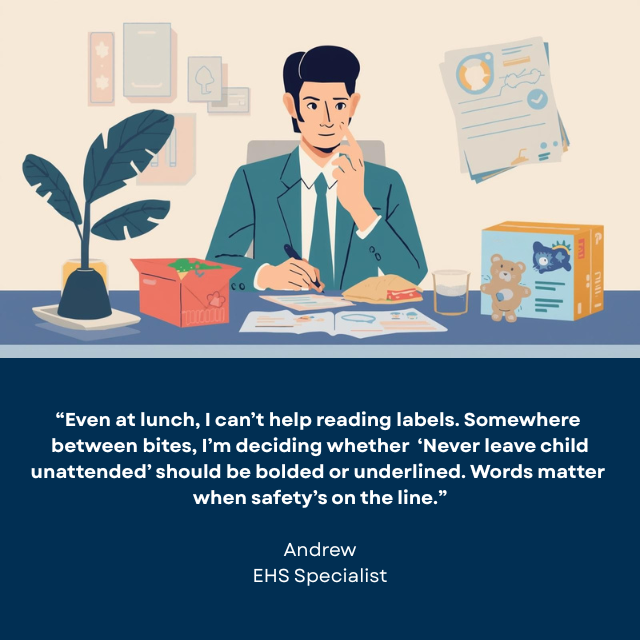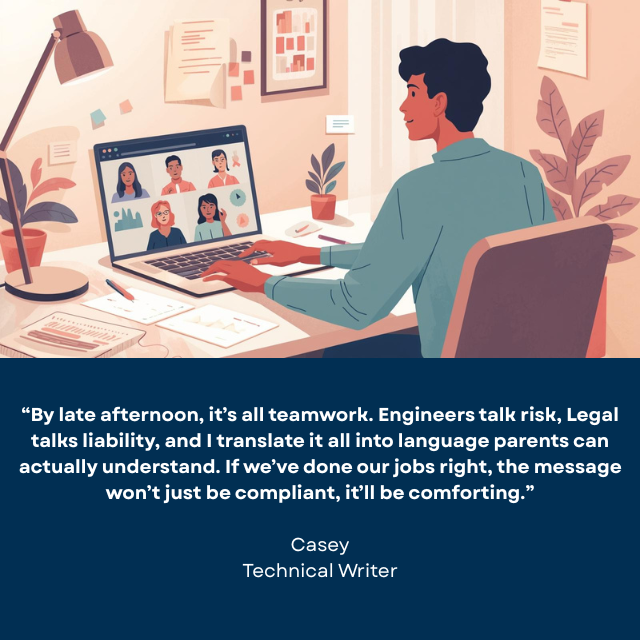- +1 (267) 368-7090
- contact@matcgroup.com
-
53 Knightsbridge Rd,
STE 216
Piscataway, NJ 08854.
Every October, Child Safety Protection Month reminds us how essential it is to prevent avoidable injuries, especially those caused by poorly understood products, missing instructions, or overlooked warnings. It’s also the perfect time to spotlight an unsung hero behind the scenes: the safety writer.
You’ve been helped by a safety writer if you’ve ever:
These technical communicators work across industries to write the warnings, guides, and emergency notices that protect people, especially children, from harm. Here’s what a day in their life looks like, and why their work matters.

The day might begin with reviewing new federal safety regulations or updated guidelines from the Consumer Product Safety Commission (CPSC). These updates don’t just get passed along. They need to be interpreted, translated, and documented clearly for parents, manufacturers, and installers.
A safety writer’s first job is to turn legal language into life-saving language.
Today’s project: updating the car seat installation guide for clarity after a new regulation affecting harness positioning.
When a product recall is issued (perhaps a baby stroller with a faulty buckle) speed and clarity are everything. A safety writer works with engineers, lawyers, and marketing to:
A good recall notice is part legal disclosure, part customer reassurance, and part emergency action plan. And it must be correct the first time.

Even the warning label on a teething toy or crib bumper isn’t just slapped on by Legal. Safety writers evaluate:
Ever wonder why safety labels say “Never use near stairs”? A writer had to decide exactly where that phrase would be seen, and how it would be understood at a glance.
One of the toughest jobs? Writing installation instructions for safety-critical items like:
The average user is tired, possibly panicked, and not an engineer. Safety writers build documents that:
The product should work under normal circumstances, but also work safely, under stress, in real-world conditions that test it.

Safety writers don’t work alone. They collaborate with:
Sometimes they even write crisis response plans, deciding what to publish when something goes wrong in the field.
In a child safety context, speed and empathy are everything. Safety writers craft messages that move fast, build trust, and reduce risk.
Child Safety Protection Month is a time to reflect on the small steps that prevent big tragedies. For safety writers, those steps happen in every line of every manual, label, alert, and support doc they touch.
Because the best kind of danger is the one you never experience, thanks to a safety writer.
Warning: Do Not Drink! The Importance of Clear Water Quality Documentation
Training for the Moon: How Apollo 11 Prepared for the Unknown